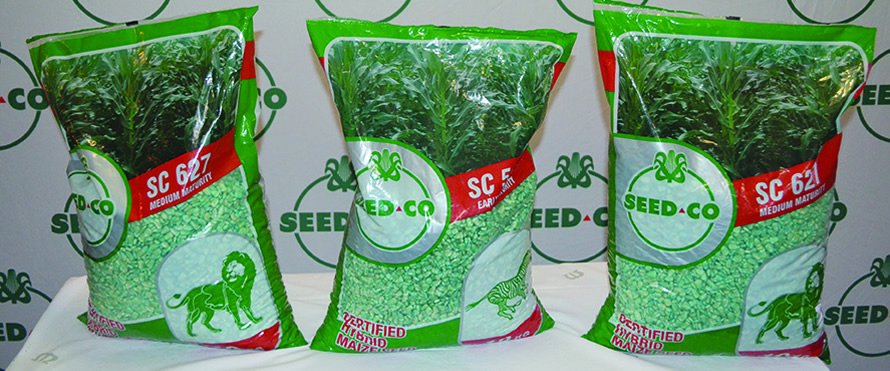
The Sunday News

ONE of country’s leading seed manufacturers, SeedCo, says they are breeding new varieties that can withstand bad weather conditions brought about by climate change.
In an interview, SeedCo sales and marketing manager Mr Irvin Craig said climate change was threatening food security hence the company was trying to come up with new seed varieties that could resist drought.
“The issue of climate change is a concern to us as seed companies. If you look, our mandate is to make sure that we produce seed that when a farmer grows is supposed to get a good yield out of the seed. Looking at the issue of climate change and our products aspect, we had to make sure that we work at other products to make sure that we address the issue of climate change,” said Mr Craig.
“Our breeders are not sleeping and are already working on other varieties to complement the ultra-early varieties that we have like the SC301. We have SC303 which is in the pipeline. We will be launching it in the next two or three seasons. Internally we have already released it. We are also working on other varieties to complement these ultra-early varieties,” he said.
Mr Craig said in 2012 they introduced another variety that had good yields even in a drought situation.
“Three years ago we launched a maize variety called hare/rabbit/katsuro which is ultra-early and this variety performs in marginal areas and it has elasticity characteristics which gives an opportunity to say, when you have more rains, it gives you more yields like 11 tonnes per hectare or when the season is bad, that yield reduces but it still gives you something.”
Mr Craig said they were not abandoning old varieties and these would always be available on the market.
“It’s not that we are abandoning our original varieties. There are high yielding and long season varieties and others. For example we have the SC727 which has hibernation characteristics, that is when there is a dry spell it actually hides itself. That is it holds itself to grow while it maintains normal growth habit in it. It looks like it is dead when there is no rain but as soon as it rains it just comes back to life,” said Mr Craig. He added that a lot of farmers had confirmed that it was drought tolerant.
“Those farmers who use irrigation, we also recommend that they use those high yielding varieties but they must do it well to achieve high yields,” said Mr Craig.
Climate and agriculture experts have said the disastrous 2014/15 farming season was an example of how climate change was affecting the agriculture sector in Zimbabwe in particular and across the globe in general.
Most of the crops in Zimbabwe wilted due to drought while some places experienced flooding due to excessive rainfall.
The worst region is Matabeleland North where about 60 percent of the maize crop planted in December was a write-off due to shortage of rainfall.
Principal director in the Ministry of Agriculture, Mechanisation and Irrigation Development Mr Joseph Gondo told Sunday Business that due to climate change, Zimbabwe was facing serious drought and flooding.
Mr Gondo said there was a need to employ mitigatory measures and counter the effects of climate change.
He said there were many interventions that the farmers could adopt to cope with climate change.
“We are promoting drought-tolerant crops. Farmers should practise water conservation management methods so that whatever little moisture there is, is conserved. On the livestock side, farmers should breed the indigenous breeds that are very much adaptable to the harsh climate conditions than the exotic breeds,” said Mr Gondo.
He said farmers should practise climate-smart agriculture, an agricultural practice that addresses climate change through reducing emissions.



